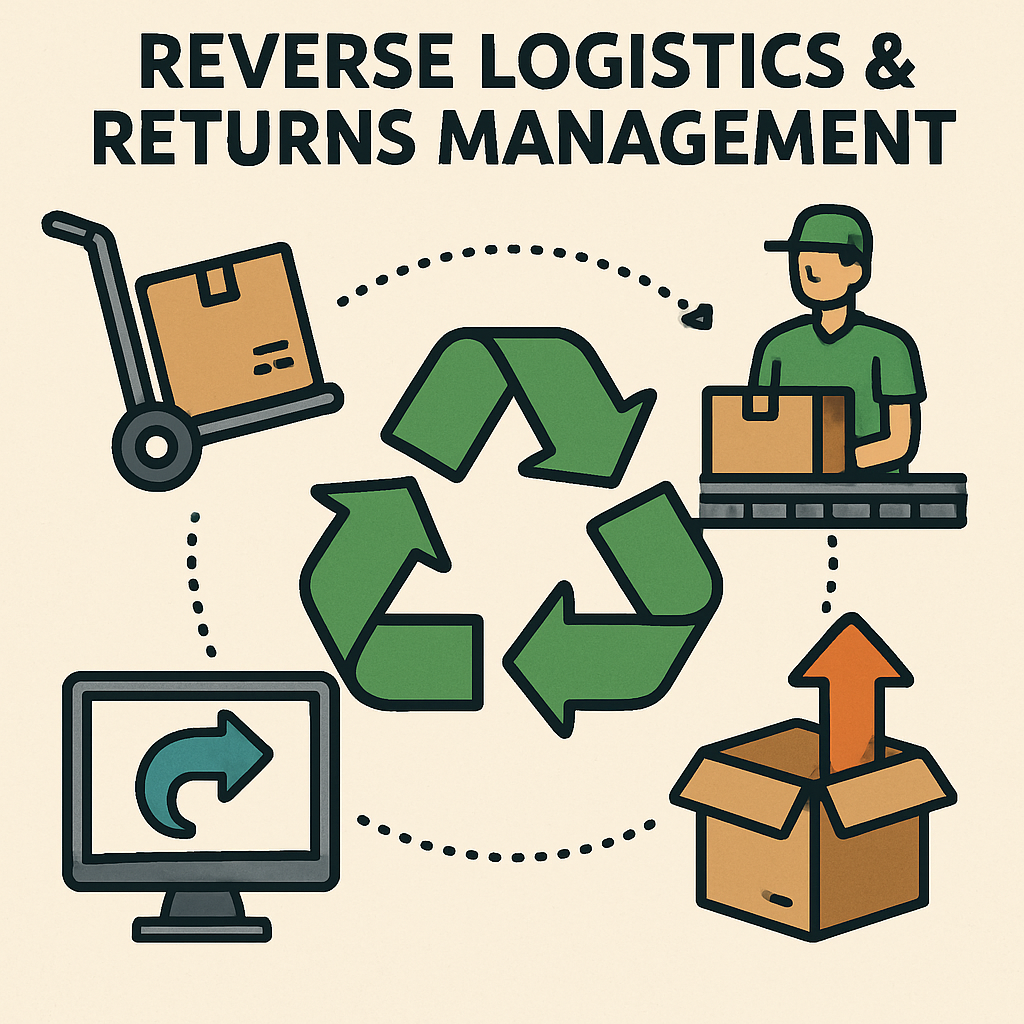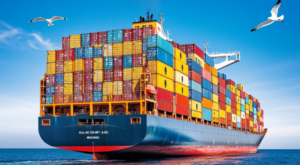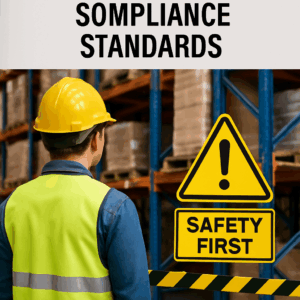How-to-Guide: Mastering Reverse Logistics & Returns Management in Malaysia
Reverse logistics has become a pivotal focus of Malaysia’s dynamic supply chain scene, mirroring the rapid expansion of e-commerce, rising customer aspirations, and the increasing attention given to sustainability and regulatory compliance. For corporate professionals, mastering the nuances of reverse logistics Malaysia, understanding an optimized returns management process, and crafting a seamless e-commerce returns policy can mark the distinction between a resilient, competitive business and one hampered by operational pitfalls.
This guide demystifies each step of the reverse logistics journey within the Malaysian context, offering practical strategies, comprehensive data, and real-world anecdotes. Whether you’re a supply chain director, corporate policymaker, or e-commerce manager, this article delivers actionable insights tailor-made for Malaysia’s marketplace.
Table of Contents
- Introduction: The Changing Face of Reverse Logistics
- Understanding Reverse Logistics in the Malaysian Context
- The Returns Management Process: Steps & Best Practices
- E-Commerce Returns Policy: How Malaysian Leaders Excel
- Product Return Handling: From Collection to Resale
- Data, Trends, and Key Statistics
- Real-World Success Stories & Anecdotes
- Practical Action Plan for Malaysian Corporations
- Conclusion
1. Introduction: The Changing Face of Reverse Logistics
In today’s digitally driven era, consumers in Malaysia and beyond expect frictionless and transparent return options. Returns arise from a variety of triggers, including product defects, buyer’s remorse, shipping errors, or simply a change in preference. Malaysian e-commerce transactions expanded by 30% in 2022 (Malaysian Investment Development Authority – MIDA), and this explosive growth brings new challenges: how do businesses manage a higher volume of returns efficiently while keeping customers happy?
A well-structured reverse logistics program is fundamental for profitability and customer trust. Understanding its strategic importance, market leaders in Malaysia now treat reverse logistics not as an afterthought, but as a core business function that can generate competitive differentiation.
Case Example: Shopee Malaysia’s Return Revolution
In 2022, Shopee Malaysia invested heavily in reengineering its reverse logistics Malaysia systems, incorporating advanced automation and AI-driven sorting. This comprehensive overhaul delivered concrete results:
- Return processing time slashed by 35%
- Increased positive customer reviews related to return experiences
- Lowered storage and administrative costs through streamlined operations
2. Understanding Reverse Logistics in the Malaysian Context
What is Reverse Logistics?
Reverse logistics encompasses all processes associated with the movement of goods from the customer back to the seller, distributor, or manufacturer. These processes include returns, repairs, refurbishment, recycling, safe disposal, and re-commerce (resale). Unlike forward logistics, where the emphasis is moving product from seller to buyer, reverse logistics often faces greater unpredictability and complexity due to variability in product conditions and customer behaviors.
Unique Challenges in Malaysia
1. Geographic Spread & Urbanization
Malaysia’s population is dispersed across Peninsular Malaysia, Sabah, and Sarawak, with dense urban clusters and remote rural areas. Designing reverse logistics networks that offer prompt returns in both urban and remote locations creates unique logistical challenges—especially concerning shipping costs and return timelines.
2. Local Regulations & Sustainability
Environmental accountability is growing in importance. Malaysia’s regulatory landscape, such as the Green Technology Master Plan, emphasizes responsible recycling and reduction of landfill disposal for electronics, plastics, and other waste. Companies must design reverse logistics systems that incorporate environmental sustainability from the outset and document compliance with local regulations.
3. Customer Diversity & Expectations
Malaysia’s multicultural population demonstrates varying expectations and behaviors. Urban millennials prioritizing speed, rural consumers who prefer in-store drop-offs, and value-conscious shoppers concerned with return shipping costs all call for tailored returns management strategies.
Why Reverse Logistics Matters to Malaysian Businesses
- Retail & E-commerce Expansion: Over 27 million Malaysians use the internet, and the proliferation of online retail directly increases the volume and frequency of product returns.
- Sustainability & Social Responsibility: Consumers are increasingly drawn to companies demonstrating green practices in recycling and disposal of returned goods.
- Cost Control: Efficient reverse logistics reduce unnecessary holding, transportation, and administrative costs.
- Brand Reputation & Loyalty: Seamless returns management enhances customer trust and the likelihood of repeat business.
Example: Lazada Malaysia
Lazada optimized its return process for rural East Malaysian customers, establishing regional return drop-off points in Sabah and Sarawak. This action facilitated easier product returns for customers outside the Klang Valley, showing Lazada’s adaptability to regional logistics challenges.
3. The Returns Management Process: Steps & Best Practices
A robust returns management process is vital for transforming product returns from a cost center into a value creation opportunity. Let’s break down the end-to-end process and pinpoint optimization opportunities for Malaysian organizations.
Key Steps in the Returns Management Process
- Return Initiation:
Customers initiate returns through online portals, mobile apps, call centers, or at physical stores.
Best Practice: Provide QR code-based returns for faster in-person drop-offs. - Return Authorization:
Review return requests for eligibility.
Best Practice: Automate approval for low-risk, low-value items to speed up the process. - Product Collection:
Products can be collected via courier, drop-off points, or in-store.
Best Practice: Offer multiple convenient collection options to cater to diverse customer preferences. - Inspection & Sorting:
Returns are inspected and categorized.
Best Practice: Use digital checklists and real-time inventory management systems. - Disposition Decision:
Determine the product’s final destination.
Best Practice: Define clear criteria for each disposition pathway. - Refund/Replacement Processing:
Execute timely refunds or exchanges.
Best Practice: Prioritize automation and proactive customer notifications. - Data Capture & Feedback Loop:
Analyze return reasons and trends.
Best Practice: Conduct regular returns data reviews.
Advanced Best Practices
- Integrated Technology: Use ERP or returns SaaS platforms.
- Customer Communication: Use SMS, WhatsApp, or email for updates.
- Outsource Non-Core Functions: Use specialized third-party providers.
- Performance Metrics: Measure key KPIs like turnaround time and satisfaction.
Mini Case: Decathlon Malaysia
Decathlon invested in an AI-powered chatbot that guides customers in initiating returns. The change reduced customer service load by 40% and boosted positive feedback.
4. E-Commerce Returns Policy: How Malaysian Leaders Excel
A transparent, well-crafted e-commerce returns policy is your first and best opportunity to set expectations and build trust with customers.
Essentials of an Effective E-Commerce Returns Policy
- Clarity: Define acceptable reasons, conditions, and return timeframes.
- Transparency: State processes, costs, and refund timelines.
- Flexibility: Adjust for product types and customer loyalty tiers.
- Convenience: Ensure returns are easy to initiate and label.
- Localization: Provide options suited to diverse Malaysian demographics.
Examples of High-Performing Malaysian Returns Policies
- FashionValet: 30-day return policy, free shipping for Peninsular Malaysia.
- Zalora Malaysia: Fast, flexible return with instant wallet refunds for eligible products.
- Hermo: 14-day window with dedicated defective item exchange flow.
Strategic Considerations for Return Policies
- Return Abuse Controls: Track behavior to prevent exploitation.
- Partial Refunds or Credits: Offer alternatives to full refunds.
- Customer Segmentation: Reward loyal shoppers with added return benefits.
Case Example: Guardian Malaysia
Guardian revamped its returns messaging and saw a 9% improvement in conversion. No-fault returns brought added peace-of-mind for personal care purchases.
5. Product Return Handling: From Collection to Resale
Managing physical product returns can unlock significant cost savings if done efficiently.
The Three Rs: Resale, Refurbish, Recycle
- Resale: Restock undamaged goods. Example: Open-box electronic deals.
- Refurbish: Repair and rebrand as certified refurbished items.
- Recycle: Responsible disposal through e-waste programs.
End-to-End Product Return Handling Workflow
- Designate dedicated return space in warehouse.
- Train staff on SOPs and fraud detection.
- Track items using barcode/RFID scans.
- Use standardized checklists for inspection.
- Log each product’s final status.
- Recover value through B2B resale or auctions.
- Use certified partners for eco-friendly disposal.
Tips for Continuous Improvement
- Weekly audits of return stock.
- Use AI to detect suspicious return trends.
- Explore brand-enhancing reuse initiatives.
Case in Point: AEON Malaysia
AEON launched “Speedy Returns” counter to process and restock returned goods within 24 hours, boosting inventory efficiency.
6. Data, Trends, and Key Statistics
Key Data Insights
- 61% of Malaysians say return policy affects buying choices.
- 47% of returns are due to sizing mismatches.
- 18% cost savings from reducing return processing time.
- 38% of companies use automation for return handling.
- 60–80% of goods are eligible for resale with proper handling.
Emerging Trends
- Unified returns for omnichannel customers.
- Increased eco-conscious recycling and packaging.
- Personalized communication and transparency boosts loyalty.
The Hidden Cost of Poor Returns Management
- Loss of repeat purchases from unhappy return experiences.
- Legal issues around improper disposal or consumer laws.
- Missed recovery from non-optimized returned inventory.
Factoid:
KPDNHEP is piloting fair returns obligations for online merchants to enhance consumer protection.
7. Real-World Success Stories & Anecdotes
FashionValet: Reducing Sizing-Related Returns
- Challenge: High return rates due to size mismatch.
- Action: AI sizing tool, flexible courier returns, free pickups in Kuala Lumpur.
- Result: 28% cost reduction and 12% higher customer retention rate.
AEON: On-Site Product Inspection
- Impact: Reduced return fraud by 18%. Faster dispute resolution and happier customers.
Hermo: Cosmetic Returns Optimization
- Solution: Immediate chat-based returns and metro same-day exchanges.
- Result: Resolved returns in 2 days instead of 7; boosted service ratings.
Samsung: Certified Refurbished Program
- Approach: Partnered with logistics and repair firms.
- Outcome: Recovered 60%+ in value and promoted sustainability branding.
8. Practical Action Plan for Malaysian Corporations
Step-by-Step Optimization Guide
- Evaluate and map returns processes and pain points.
- Align return policies with benchmarks and best practices.
- Implement technology for returns automation and dashboards.
- Upskill staff and incentivize warehouse quality handling.
- Partner with 3PLs, resellers, repair firms, and recyclers.
- Use KPIs and customer insights to drive improvements.
- Stay future-ready with compliance, ESG, and digital tools.
Quick Optimization Checklist
- Are return channels easy to use and well-known?
- Is staff adequately trained for fast inspections?
- Are inefficiencies highlighted with real-time data?
- Is sustainability a core part of your strategy?
- Are insights from returns used to improve service?
9. Conclusion
The Malaysian e-commerce landscape presents extensive opportunities—but also complex challenges—in reverse logistics and returns management. Forward-thinking businesses accept returns not as a loss, but as a powerful lever for customer loyalty, operational innovation, and environmental stewardship.
Start with small strategic moves: clarify your returns policy, automate simple workflows, or test a refurbishment program. Gains accumulate with time and insight. Malaysian corporations ready to master reverse logistics today are poised to lead tomorrow’s marketplace.
For more advisory on optimizing your organization’s reverse logistics Malaysia workflow, consult local supply chain associations, connect with logistics experts, or partner with technology vendors specializing in returns management.




